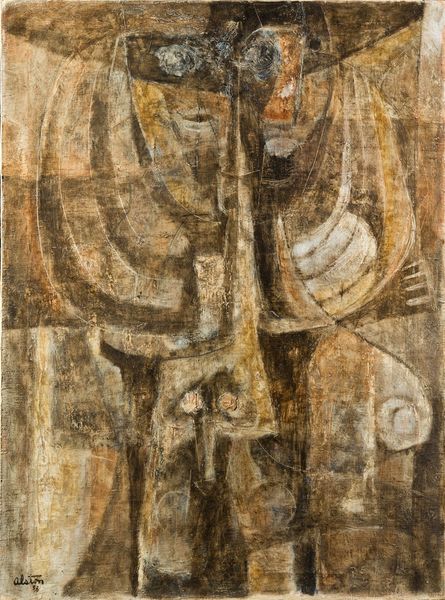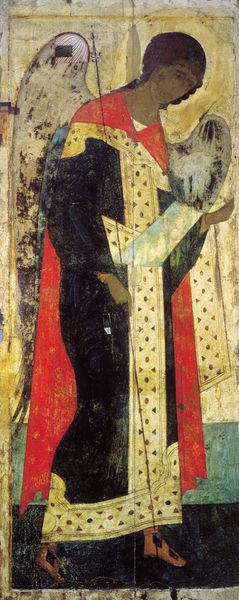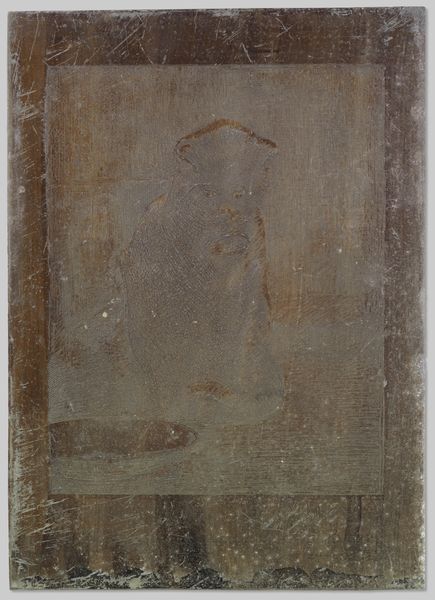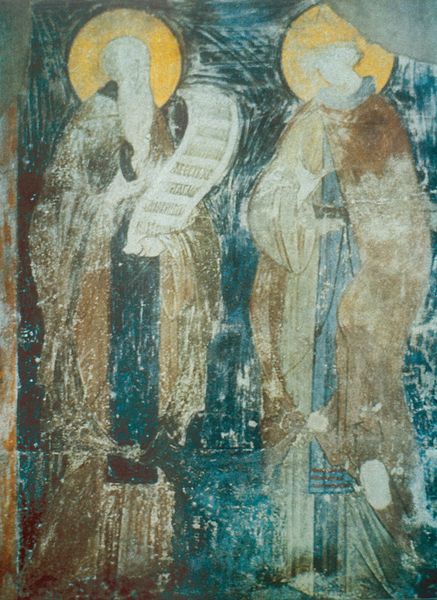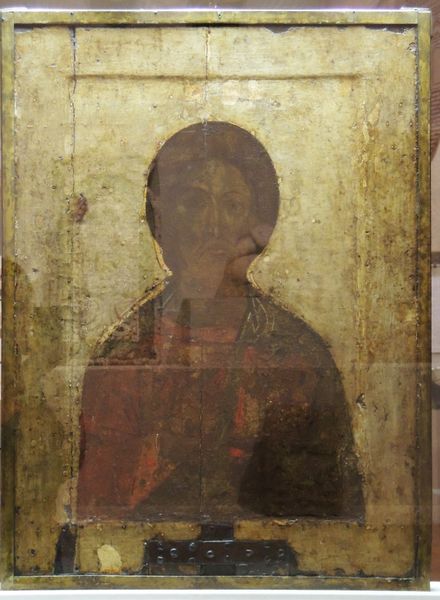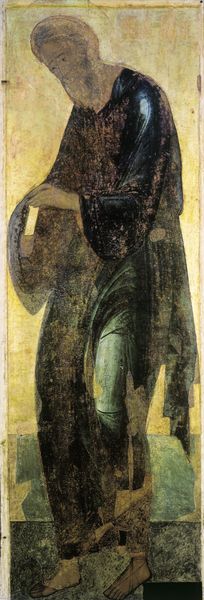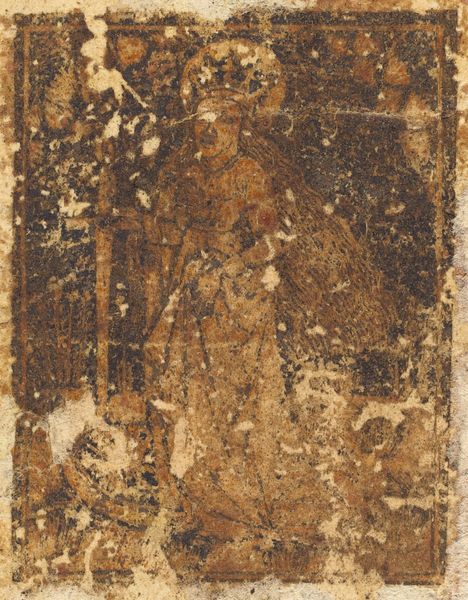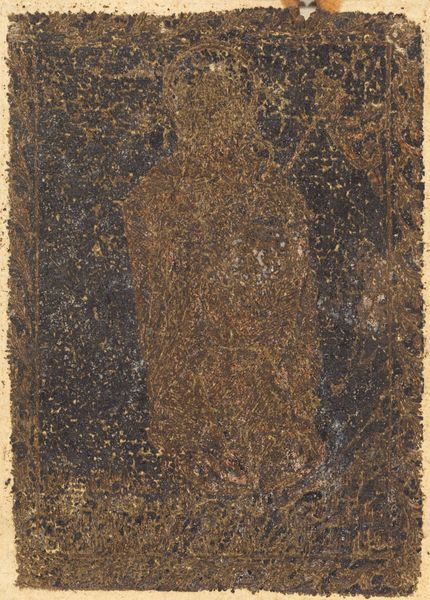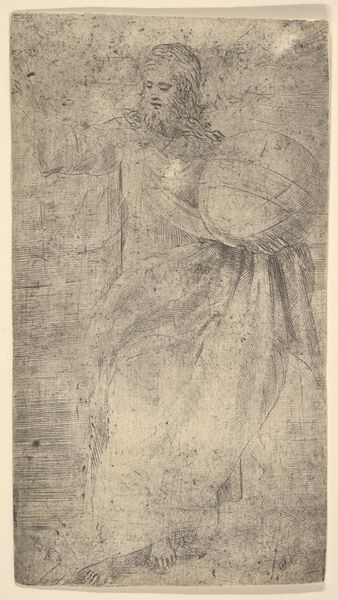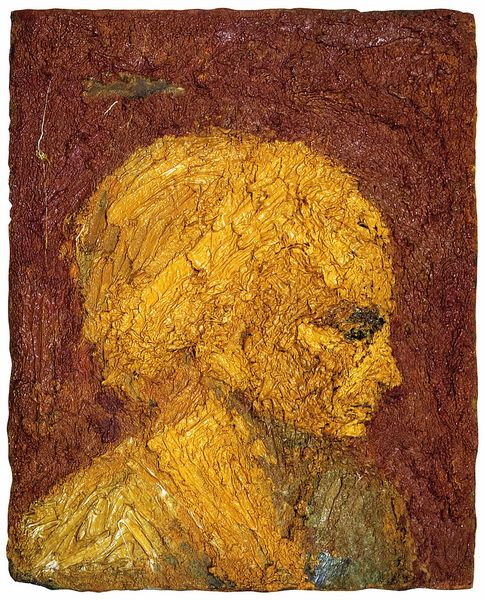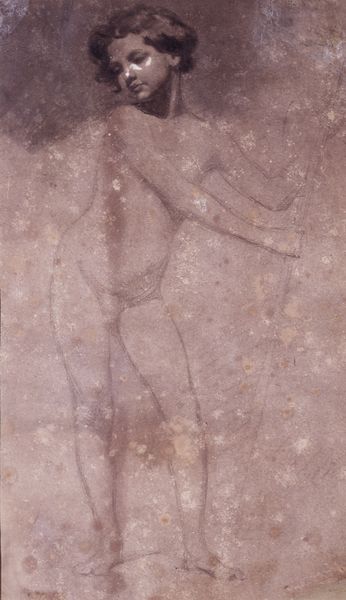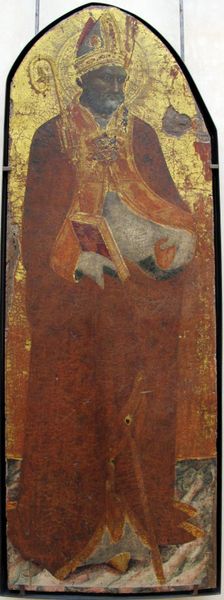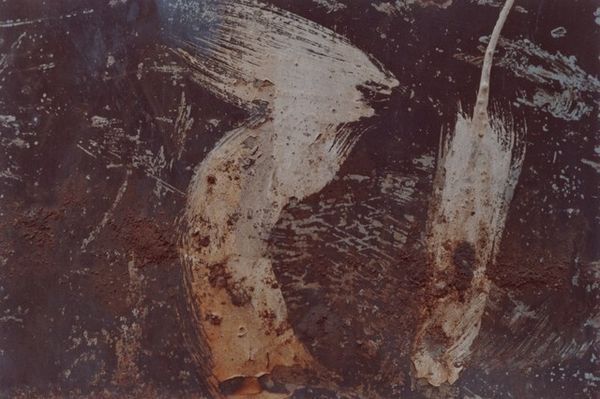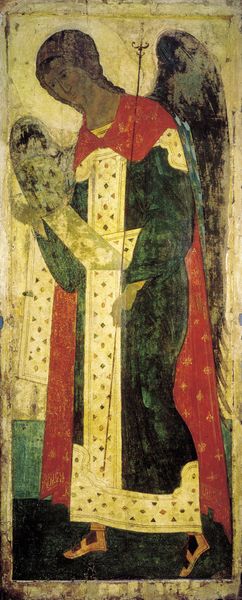
tempera, painting, fresco
#
portrait
#
byzantine-art
#
medieval
#
narrative-art
#
tempera
#
painting
#
prophet
#
figuration
#
form
#
fresco
#
oil painting
#
underpainting
#
paint stroke
#
christianity
#
men
#
painting painterly
#
line
#
history-painting
#
christ
Copyright: Public domain
Andrei Rublev rendered this fresco of the Prophet Daniel sometime in the late 14th or early 15th century. It was made for the Dormition Cathedral in Zvenigorod, Russia. Rublev’s work exists at the intersection of the Orthodox Christian tradition, the political history of Muscovite Russia, and the institutions of art. The cultural context of Russia at this time was defined by the rise of Moscow as a dominant principality and the construction of a Russian identity centered on Orthodox Christianity. Rublev, as both a monk and an artist, had a key role in defining this identity. His style, marked by soft lines and contemplative figures, became the standard for Russian Orthodox iconography. It was consciously conservative, reaffirming established religious and social norms. Rublev’s status as a venerated icon painter was cemented by the Russian Orthodox Church, who canonized him as a saint in 1988. Understanding his work requires us to delve into theological texts, the history of Russian monasticism, and the politics of the Russian Orthodox Church. The meaning of art, as this example suggests, is contingent on its social and institutional context.
Comments
No comments
Be the first to comment and join the conversation on the ultimate creative platform.
